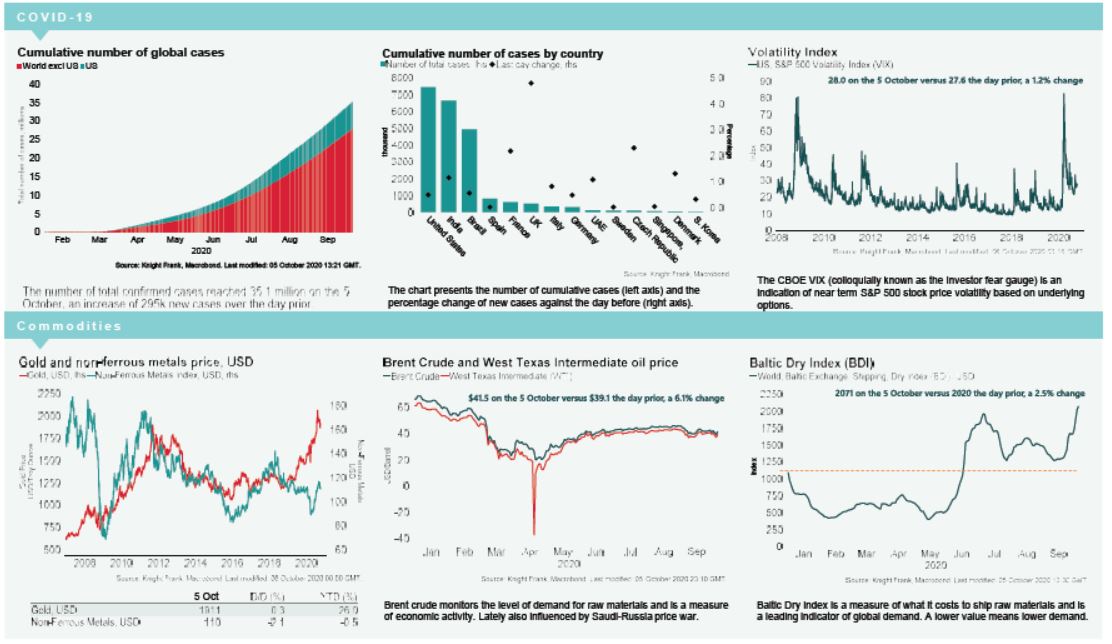Covid-19 Daily Dashboard - 6 October 2020
An overview of key economic and financial metrics.
2 minutes to read

Download an overview of key economic and financial metrics relating to Covid-19 on 6 October 2020.
Equities: In Europe, the DAX, CAC 40 and the FTSE 250 are all -0.3% lower this morning, while the STOXX 600 is -0.4%. In Asia, stocks were up on close, with the Hang Seng (+0.9%) and the Topix (+0.5%) recording gains, as did the Kospi and the S&P / ASX 200, which both added +0.3% on close. In the US, futures for the S&P 500 are down -0.3%.
VIX: The CBOE market volatility index increased +2.7% over the morning to 28.7, while the Euro Stoxx 50 vix has decreased -1.4% to 25.9. Both indices remain elevated compared to their long term averages.
Bonds: The US 10-year bond yield has compressed -2bps to 0.76%, while the German 10-year bund yield is down -1bp to -0.52%. Both the UK 10-year gilt yield and the Italian 10-year bond yield are steady at 0.28% and 0.80%. The US 10-year treasury yield and the UK 10-year gilt yield are the highest they have been since June and the beginning of September, respectively.
Currency: Sterling and the euro are currently $1.30 and $1.18. Hedging benefits for US dollar denominated investors into the UK and the eurozone are at 0.35% and 1.19% per annum on a five-year basis.
Oil: Brent Crude and the West Texas Intermediate (WTI) have both increased +0.5% this morning to $41.50 and $39.40 per barrel.
Baltic Dry: The Baltic Dry increased +2.5% yesterday to 2,071, its highest level since September 2019. The overall index was driven higher by the capesize index which was up +3.7% yesterday to the largest it has been since July.
Gold: The price of gold increased +1% yesterday to $1,911 per troy ounce. Gold reached a record of $2,063 on 6th August and has since declined -7%, however it remains +25% higher than it was at the start of January.
German Industry: New factory orders rose +4.5% over the month of August, above the +3.3% rise the previous month and higher than market expectations of +2.6%. This marks the country’s fourth consecutive month of growth in factory orders, predominantly driven by orders from the eurozone. However, factory orders are down -2.2% year on year in August and new orders remain below pre pandemic levels.